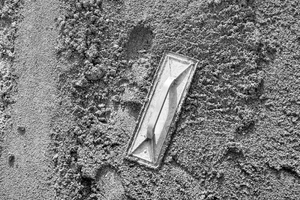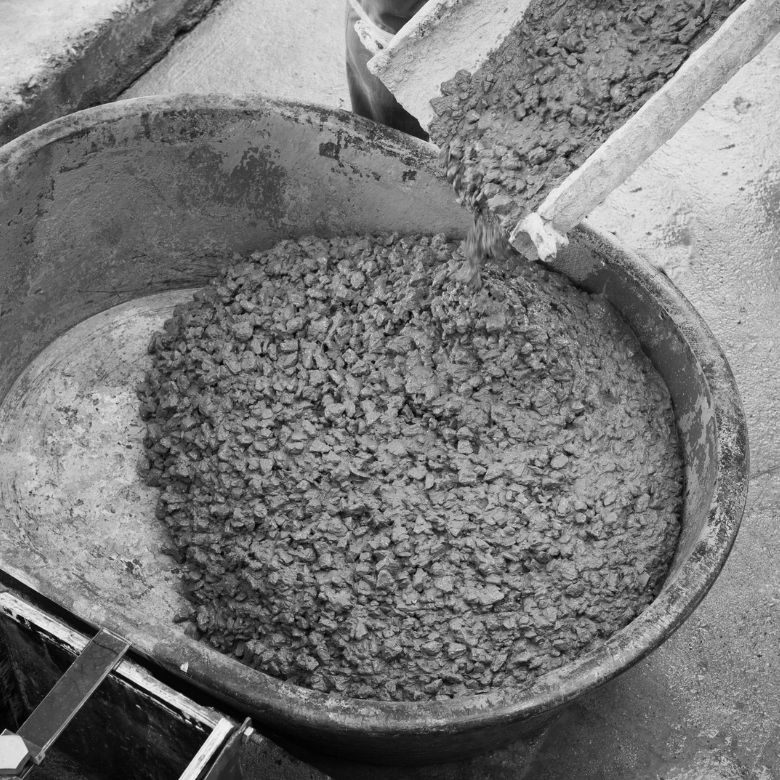Concrete is a composite with multiple applications. It is usually used for laying foundations, building floors and stairs, or for hardening subgrades. Architectural concrete is used for arranging interiors and façades, for example. By choosing a mixture for a particular project, we must pay attention to the grade of concrete. What should we know about it? Let’s check!

The grade of concrete: definition
In construction material wholesale stores or in product catalogues of online stores, we can find various designations of concrete. The symbols include capital letters followed by two digits. How to read symbols like: concrete C25 or concrete B100? A builder or an architect can easily decode them. However, non-professionals often do not know how to interpret an acronym included in a product description.
These letters and digits stand for the grade of concrete. It is a parameter that defines the material’s compressive strength, expressed in megapascals (MPa). Strength tests are performed on concrete blocks shaped as a cylinder or cube. The first number (for example, C20) defines the specific compressive strength of the concrete, determined on cylindrical samples after 28 days of curing. The value following the / sign, known as the modulus or forward slash, stands for specific strength when compressing a cubic sample of 15 cm × 15 cm × 15 cm, determined after 28 days. The higher the concrete grade, the higher its compressive strength.
Concrete grades: table
If we type the term ‘concrete grades’ into a search tool, we will easily find an updated list and the new concrete designations, which are often presented as a table. According to PN-EN 206 standard, titled ‘Concrete – Specification, performance, production and conformity’ (the latest version is PN-EN 206+A2:2021-08), the grades of concrete are:
- C grades: normal and heavy concretes (C8/10 to C100/115),
- LC grades: light concretes (LC8/9 to LC80/88).
The letter C stands for concrete. C and LC are new concrete grades, established as a result of implementing European standards on the local markets of construction materials. (Some manufacturers keep adding the old designations, such as B, to make product identification by customers easier).
Old and new concrete designations – B concrete
How to interpret the new designations of concrete? Builders who have used the B designations for concretes for many years often still use the old nomenclature. Nevertheless, it is worth looking at the table of the old and new concrete grades and then comparing the designations.
In the current classification, the C-grade concretes replaced the old class B, for example:
- concrete B15 is now concrete C12/15,
- concrete B20 is now concrete C16/20,
- concrete B25 is now concrete C20/25,
- concrete B30 is now concrete C25/30,
- concrete B45 is now concrete C35/45,
- concrete B55 is now concrete C45/55, and
- concrete B60 is now concrete C50/60.
The former designation concrete B35 refers to the group of concretes C30/37. Lean concrete (grade B10) is now designated as concrete C8/10.

Concrete C20: compressive strength
Concrete C20/25 (B25) is broadly applied in, for example, single-family housing. This is since it is easy to process, relatively cheap, and very durable. That commonly available composite shows good strength parameters: the strength of a cubic sample is 20 MPa. For cylindrical samples, the specific strength index is 16 MPa.
If we wish to obtain better strength parameters, we should use concrete C25/30 (B30), whose strength is 9 MPa higher for cylindrical samples and 10 MPa higher for cubic samples.
Concrete C: division and applications
What should we know about C-grade concrete and its applications? Here is a brief summary:
- concrete C10 (C8/10), also referred to as lean concrete, is used for stabilising subgrades; it is a substrate and levelling material,
- concrete C25/30: the strength parameters of this composite are very good, which is why it is used for foundations, floors, and stairs (let us point out that it used to be concrete B30; the new designation can be found in the updated PN-EN 206 standard),
- concrete C16/20: its properties resemble those of concretes C20/25 and C25/30; it is used for building columns, foundations or walls,
- concrete C45/55: this is also structural concrete, which is used to build prefabricated elements, wells, or industrial flooring,
- concrete 55, C50: a concrete with enhanced compressive strength, which proves to be good in structures such as industrial tanks, bridges or support columns.
The new concrete grade designations apply throughout the European Union. Standardisation made it much easier for builders to choose suitable materials that correspond to design assumptions. Besides, laboratories all over the world work on improving the strength performance of concrete. The market of construction materials keeps offering new, improved products, which requires amending and updating the relevant standards.
The PCC Group offers a wide range of concrete additives and admixtures, including, for example, plasticisers and microsilica.
- https://pl.wikipedia.org/wiki/Klasa_betonu
- PN-88/B-06250 Beton zwykły
- PN-EN 206-1:2003 Beton. Część 1: Wymagania, właściwości, produkcja i zgodność
- M.Knauff, A.Golubińska, P.Knyziak - Tablice i wzory do projektowania konstrukcji żelbetowych z przykładami obliczeń, 2013.